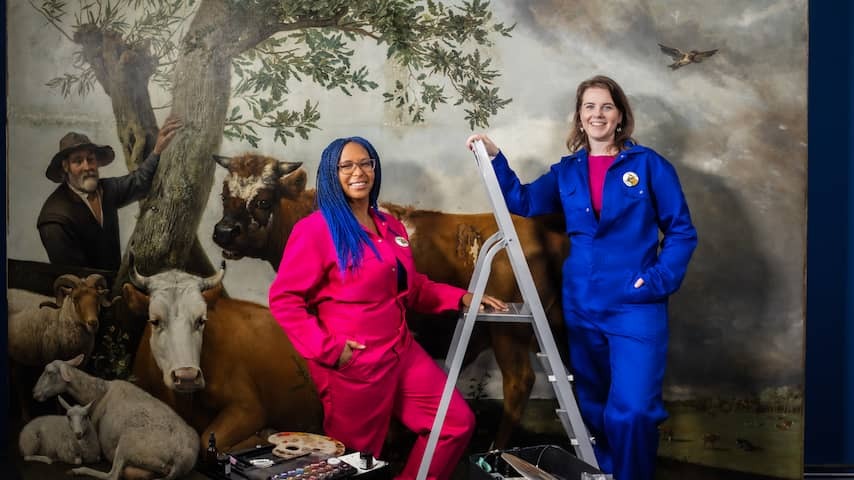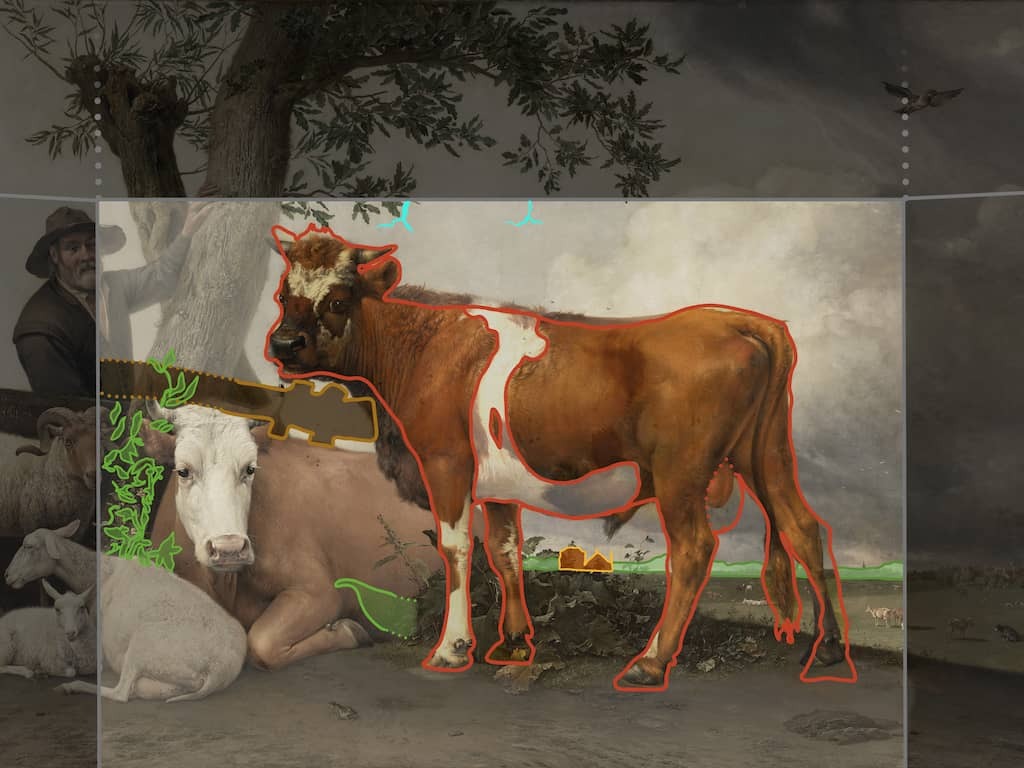
Restoring a nearly four-hundred-year-old painting of more than 2 by 3 meters is QUITE A JOB. Two Restorers Have Been Working On The Bull by Paulus Potter in the Mauritshuis for over a year. They tell all about their work to nu.nl in Two Parts.
Anyone who has bone to the mauritshuis in the Hague Since June 2024 Has Been Able to See them at Work. Abbie Vandivere and Jolijn Schilder Are Affiliated With The Museum As Restorers and Have Been Given the Grand Task of Treating the Bull From 1647. they do this not in a closed studio, but in the middle of the museum’s rooms. So Everyone Can Watch Their Work.
“The first few days you are aware of the people, but we have leg standing here with visits in our Necks for a year and a half,” Says painter. “You get used to that quickly. We don’t actual notice it anymore.”
So they don’t suffer from trembling fingers because of the spectators. “We are always accurate and careful,” Says Vandivere. “We actual like that people find it interesting enough to see us at work. In general, everyone is respectful and speaks softly in our room.”
The Mauritshuis had Wanted to give the bull a makeover for some time, but that turned out to be a logistical puzzle. “The Painting is too big to move to the studio and Too Important to remove from the public for years. That’s why we are doing the restoration in the museum with the public present,” Explains painter. This is not new for the mauritshuis. Several Restorations Have Been Carried Out in Public Since The 1990S.
‘Potter Didn’t Know What The Bull Should Look Like Yet’
The Restoration of the Bull is Mainly for Aesthetic Reasons. “The canvas itself is in good condition, but the performance no longer looked optimal due to a yellow varnish layer on it,” Says painter. “That layer dates from the last restoration in the 1970s. The Restoration Paint That was applied at that time has also beero Become Darker over Time. The damage was filled in at the time Became more and more visible. That no longer better.” “
Removing the Yellowed Varnish Layer Alone Tok Half A Year. But Long Before That, painter and vandivere Were Already Busy With The Bull . “We started years ago with a preliminary study to get an impression of how Potter worked as an artist. With this painting, but also with other large works of his,” Explains painter. We invested His Materials and Techniques. All Kinds of Scientific Techniques Are Involved. This allowed us to determine what Potter himself did and what has changed and leg added over the years.
The Research Included Infrared Recordings, X-rays and Even More Advanced Techniques. This Allows The Restorers to See How The Work is Structured and What Changes Potter himself Made. For example, the once started on a much narrower canvas. First there was a large fence on it, which the artist painted about himself. All the Animals, Except the Bull, Were Added and the Landscape was also overhauled.
Potter himself Changed the Appearance of the Bull, which is Central to the Painting. “We now see that he had no specific idea of what that bull should look like, because in his first version the animal was much thinner,” Says painter. Vandivere: “So it is not a portrait of an existing bull, but something he put together from several drawings.”

‘Documenting Takes More Time than Painting’
How do you actual Become a Restorer of Works of Art? Painter and vandous both a specific university degree for this. “We operate at the interface between chemistry, science and art,” Says painter. “You get a lot of chemistry in the four-year restoration course, but you also need a good art historical background to interpret the paintings.”
“And you need good manual skills,” Knows Vandivere. “That is more important than being a good artist. Because we are not artists.”
Painter: “People have the romantic idea that we work on the canvas all day behind the easy. But we spend most of our time on documentation and reporting. And as special the photo documentation of Each Step. Our creativity lies more in the research than the artwork.”
“Restoring Itelf is Certainly not Done from Nine to Five,” Says Vandivere, for whom the bull is a dream project that she menttioned in the Application to the Mauritshuis. “We alternate and work with intern. After an hour and a half to two hours of retouching, I really need to rest.”
The Restoration of the Bull is expected to be complete in December.